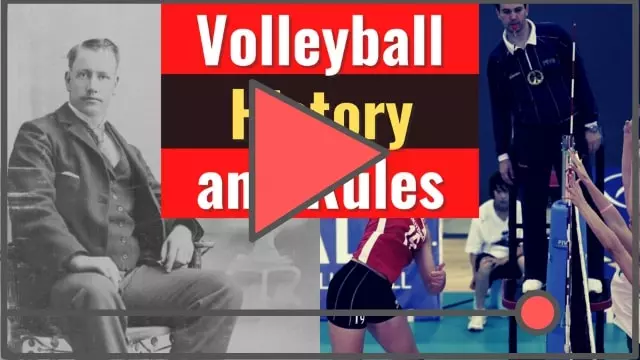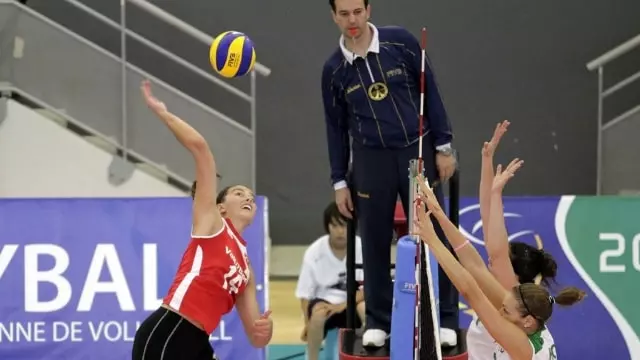Volleyball History and Rules
Volleyball History and Rules. Updated content on the origin and history of Volleyball and its main rules.
Who created Volleyball?
The history of Volleyball began in Massachusetts in the United States in 1895, its creator was physical education teacher William G. Morgan. The sport’s original name was “Mintonette”, but was soon named Volleyball.
At first Volleyball was a sport practiced only in the United States, but soon spread all over the world, it was made an Olympic sport and one of the most popular and most practiced sports in the world.
The net in the history of volleyball
William Morgan was inspired by Tennis to get the idea of a net, but a net that would get taller than the Tennis network.
The Ball in the History of Volleyball
Volleyball needed to be something bigger than a tennis ball, but lighter than a basketball. A light leather ball was then created that could easily be thrown over the net.
Volleyball History
The Volleyball game has experienced a wide variety of rule changes over the early years. Different rules were used in various parts of the world before normalization and standardization of volleyball rules.
Number of players
In 1912 the number of players on a Volleyball team was set at six, which is the same to date. The rotation or rotation system of the screwers was also implemented at the same time.
Volleyball arrives in Europe
In 1915 Volleyball arrives on French beaches through American soldiers who were fighting in World War I. The popularity of Voleibol grew rapidly. Volleyball has expanded especially to Eastern Europe, where indoor games (on closed courts) are popular due to the very cold weather.
The Score
In 1916 the score changed to a form reminiscent of today’s scoring system. The score changed from 21 to 15 points and the Sets were introduced. The winner was determined at a better of two, meaning that two Sets were needed to win a match.
Also in 1916 consecutive contacts (ringtones) by each player were limited to one touch.
It was also established that a player commits a foul to hold on or drive the ball.
Playing with Pé
It was also allowed to play with feet (which is very interesting because FIVB – International Volleyball Federation – allowed again in the recent rule changes that occurred in 1995.)
Touch Limit rule and Lock
In 1920 there was a major change in volleyball rule,the maximum number of three touches was established on the ball per team. The first blocking attempts occurred even before they were identified and recognized by the rules.
WHEN VOLLEYBALL BECAME OLYMPIC SPORT
The Volleyball Indoor became an official Olympic sport in Tokyo 1964, the same year that international volleyball rules were standardized in 1964, when.
Beach Volleyball in the History of Volleyball
There are some reports of men playing volleyball on the beach in Hawaii as early as 1915, while the history of beach volleyball actually began in Santa Monica, California/USA in the 1920s. It was there then that the first volleyball courts were placed on the beach for recreational practice of the regulars.
Beach Volleyball in World War II
During World War II, many American naval bases had beach volleyball courts and this helped spread volleyball around the world.
First Beach Volleyball competitions
The first men’s doubles beach volleyball tournament was held in Santa Monica, California, in 1948.
Beach volleyball at the Olympics
Beach Volleyball won Olympic sports status at the Atlanta Olympics in 1996.
“In 2001, the IOC awarded Beach Volleyball the status of permanent Olympic sport.”
Volleyball Rules
01 – How Big is the Volleyball Court?
The official volleyball court is a rectangle, measuring 18 meters long and 9 meters wide. All lines on the Volleyball court are 5 centimeters wide.
02 – What is the Height of the Official Volleyball Net?
- The official Volleyball net has a height of 2.24 meters for women’s games and 2.43 meters for men’s games.
- The posts are 2.55 meters high and are 0.50 to 1 meter from the sideline.
- The Volleyball net is 1 meter high by 9.50 to 10 meters wide.
- The Volleyball net antennas must be flexible and measure 1.8 meters.
- The antennas are fixed to the net over the court’s sidelines.
- The antenna serves to delimit the area where the ball crosses over the net.
03 – How Many Players Form a Team?
Usually, a complete Volleyball team consists of 12 players, a coach and up to two assistants, a physiotherapist, and a doctor. Yet, 14 players may be recorded on the score sheet, according to the following rules:
- Less than 12 players: possibility of 1 libero.
- 12 players: possibility of 1 or 2 liberos.
- 13-14 players: mandatory of 2 liberos.
The equipment of the players consists of a shirt, shorts, socks and sports shoes. All players must wear equal uniforms except the libero. The shirts will be numbered 1 to 20. Players may wear glasses or contact lenses as long as they are responsible for the risks.
OBSERVATION: The coach and the team captain are responsible for the conduct of their teams. The libero cannot be the captain.
04 – How Many Sets a Volleyball Match Has?
- One official Volleyball match is played in a best of 5 sets (3 winning sets for a team).
- Wins a set the team who first makes 25 points, with a minimal advantage of 2 points.
- In case of a draw in 24 x 24, the set should continue until one of the teams has an advantage of 2 points. Ex.: 26 x 24 or 27 x 25 or 28 x 26.
- Wins the match the first team to win 3 sets.
- In case of a tie in 2 x 2 sets, the 5th set, or Tie Break will be played, until 15 points, with the minimal difference of 2 points.
05 – THE ROTATION IN VOLLEYBALL
When a receiving team wins a Rally, gets the right to serve, their players must rotate a position clockwise. The player who was in position 2 (right front) will go to position 1, the player who was in position 1 goes to position 6, the player who was in position 6 goes to position 5 and so on.
- Three players must form the front zone, position 4 (left front), 3 (middle front) and 2 (right front).
- Three players must form the back zone: 5 (left back), 6 (middle back) and 1 (right back).
- After the service, the players can move freely around the court.
06 – Number of Contacts
A team may perform up to 3 contacts before sending the ball to the opponent team. Block touching does not count as a contact.
6.1 – Volleyball Four Contacts
The team which makes more than three contacts is committing a foul.
07 – Volleyball Double Contact
A player may not have two consecutive contacts to the ball. A touch on block does not count as the player’s first contact.
08 – Hold in Volleyball
Is not allowed to hold, throw or push the ball, it has to be struck or hit.
09 – Penetration Over the Net
It’s not allowed to touch the ball on the opponent’s side of the court until he finishes his action of attack.
9.1 – Penetration Under the Net
Is allowed to penetrate the opponent space under the net, since:
- It doesn’t interfere on the opponent action;
- A part of the foot stays on the central line.
10 – Volleyball Net Foul
- Any contact with the net, in the space between the antennas, is a foul.
- A player contact with the net, due the net movement after a ball hit on it, is not considered a foul.
- Touching the posts, net fixing cables or any material outside of the space between the antennas, is not considered a foul.
MORE VOLLEYBALL CONTENT
- Volleyball Court
- The History of History
- All Volleyball Rules
- Video Class Volleyball Basics
- Volleyball Tactics
- Volleyball Positions
- Volleyball Rotations

